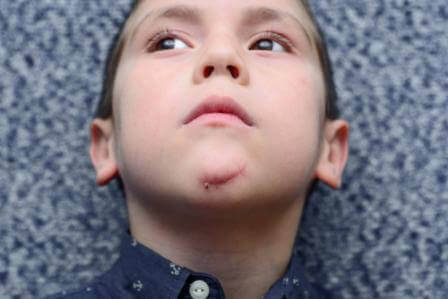How to Treat Scars
If you don’t like scars marking up your skin, treat them yourself with aloe, creams, and vitamins. With these tips, you’ll be blemish-free in no time.
Bruce and Jeanne Lubin

Aloe for Acne Scars
If you’ve got acne scars or a minor burn or skin irritation, gently rub a little aloe on the area. Aloe is a soothing anti-inflammatory that moisturizes and repairs damaged skin cells while stimulating the growth of new ones. Applied regularly, it can also minimize the appearance of scars. However, don’t use aloe on open wounds—wait a couple weeks until the scarring begins, and only then reach for the aloe.
The Cream of Your Dreams
Once your wound has closed up, apply creams or ointments containing avocado oil, castor oil, honey, comfrey, or shea butter. These ingredients are known to encourage healing and minimize scarring.
Don’t Buy That!
There are plenty of expensive creams on the market that boast scar “healing” abilities, thanks to their cocoa butter content. Unfortunately, there’s no evidence that it will help you heal. Instead of tossing more cash into the fancy toiletry industry, you’ll get better results from basic household staples like petroleum jelly, aloe vera gel, and even honey. Money saved: $10-30.
Get Your Vitamins!
What you eat can affect how quickly and smoothly your skin heals. Make sure you get plenty of vitamins A, C, and E, as they can help restore damaged tissue, encourage the growth of new tissue, reduce inflammation, and improve the color and texture of scars. Great sources of vitamin A include sweet potatoes, carrots, leafy greens, and apricots. Get your fill of C from bell peppers, leafy greens, broccoli, strawberries, and citrus fruits. For vitamin E, nosh on spinach, tofu, almonds, hazelnuts, sunflower seeds, peanuts, and broccoli (but not all at once!).
Cool Your Jets
Getting an injury can be upsetting, no matter what the cause. However, studies show that heightened stress and emotion can affect your immune system and lead to longer healing time. Whether you cut yourself with a knife, wiped out on rollerskates, or touched a still-hot stove, try your best to stay calm.
Heal with Honey
Honey has been used to treat wounds for centuries: It helps heal and prevent infection, relieves inflammation and swelling, encourages the growth of new tissue while eliminating dead tissue, and reduces scarring. Simply place a spot of raw, natural honey onto your injured skin and wrap with a bandage. When buying honey, keep in mind that darker colors indicate stronger healing properties. Even better, look for a medicinal honey that’s been formulated specifically for healing.
Myth Buster
Think twice before you douse a fresh cut with hydrogen peroxide! While popular knowledge says that the antiseptic will disinfect a wound before bandaging, it’s actually not the best way to clean a cut—peroxide can damage the skin and even disrupt the healing process. Instead, wash with a mild soap and rinse under cool water for a few minutes to eliminate dirt and bacteria.
Protect New Skin with Sunblock
Because scars are composed of new skin with fresh, light pigment, you have to take extra care of them in the sun. Expose new scars to sunshine, and they’ll react differently from the rest of your skin and grow considerably darker. For one year after your injury, be vigilant with sunscreen so you don’t disturb the healing process and cause discoloration on the scarred skin. Use SPF 35 or higher on your scars every time you go outdoors.
Super Glue to the Rescue
Yep, you read that right! If you or a family member gets a small cut, you can minimize scarring using Super Glue. The over-the-counter glue is nontoxic, strong enough to bind skin back together, and safe for certain types of minor wounds, such as papercuts. (Do not use this product on deep wounds or if there’s a risk of infection.) To treat a cut with Super Glue, first wash thoroughly with soap. Gently press the skin edges together, and dab the “seam” with one drop of glue. Hold until the glue dries and the skin is closed up. Reapply as necessary to keep the wound sealed, and try not to glue your fingers together!
For more tips from all around the internet, don’t forget to sign up for our newsletter or follow us on Facebook!
Photo by Shutterstock.

